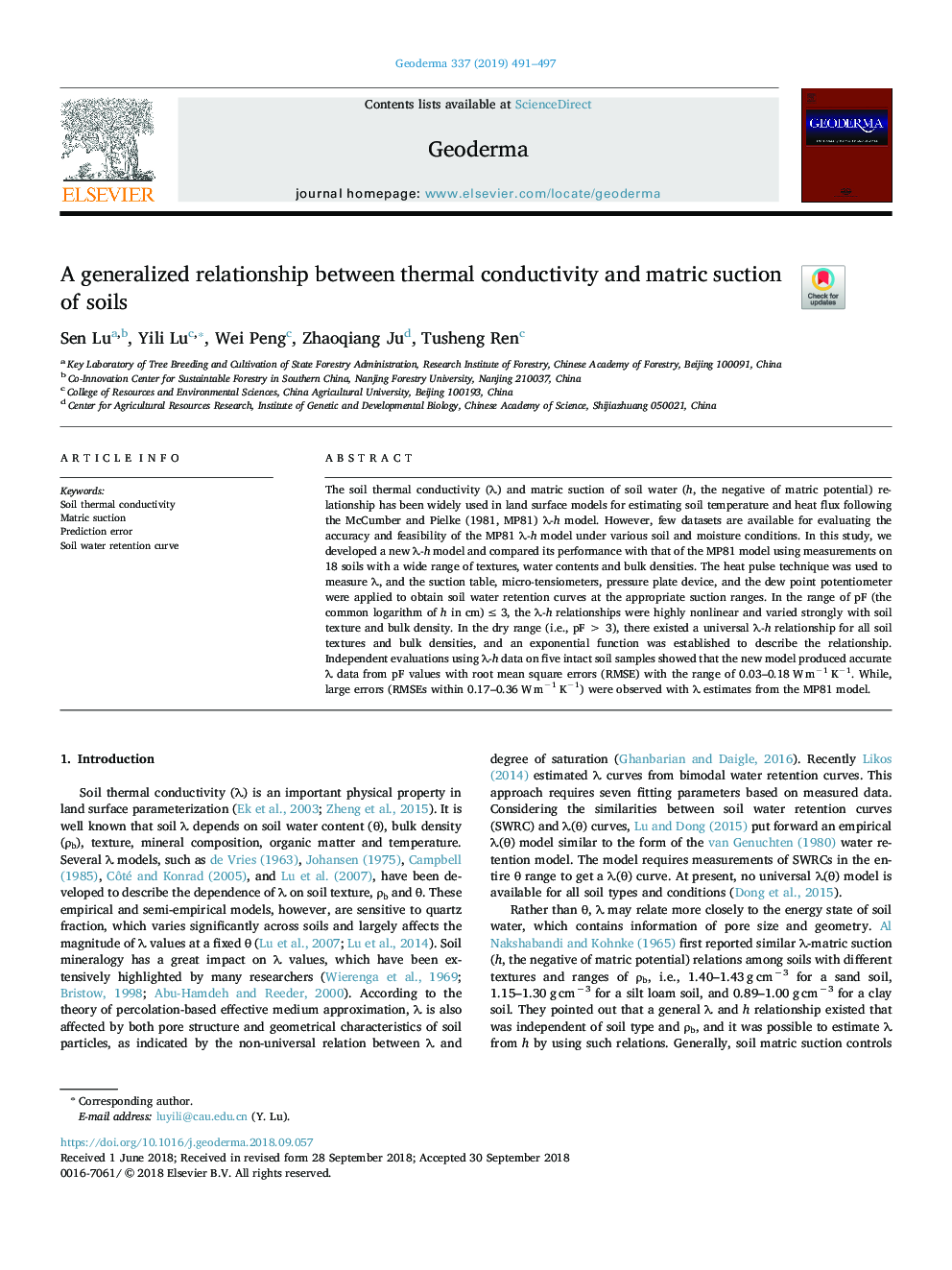| Article ID | Journal | Published Year | Pages | File Type |
|---|---|---|---|---|
| 11024802 | Geoderma | 2019 | 7 Pages |
Abstract
The soil thermal conductivity (λ) and matric suction of soil water (h, the negative of matric potential) relationship has been widely used in land surface models for estimating soil temperature and heat flux following the McCumber and Pielke (1981, MP81) λ-h model. However, few datasets are available for evaluating the accuracy and feasibility of the MP81 λ-h model under various soil and moisture conditions. In this study, we developed a new λ-h model and compared its performance with that of the MP81 model using measurements on 18 soils with a wide range of textures, water contents and bulk densities. The heat pulse technique was used to measure λ, and the suction table, micro-tensiometers, pressure plate device, and the dew point potentiometer were applied to obtain soil water retention curves at the appropriate suction ranges. In the range of pF (the common logarithm of h in cm)â¯â¤â¯3, the λ-h relationships were highly nonlinear and varied strongly with soil texture and bulk density. In the dry range (i.e., pFâ¯>â¯3), there existed a universal λ-h relationship for all soil textures and bulk densities, and an exponential function was established to describe the relationship. Independent evaluations using λ-h data on five intact soil samples showed that the new model produced accurate λ data from pF values with root mean square errors (RMSE) with the range of 0.03-0.18â¯Wâ¯mâ1â¯Kâ1. While, large errors (RMSEs within 0.17-0.36â¯Wâ¯mâ1â¯Kâ1) were observed with λ estimates from the MP81 model.
Related Topics
Physical Sciences and Engineering
Earth and Planetary Sciences
Earth-Surface Processes
Authors
Sen Lu, Yili Lu, Wei Peng, Zhaoqiang Ju, Tusheng Ren,
